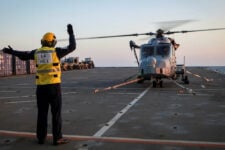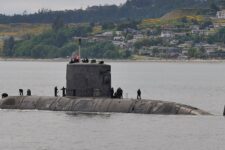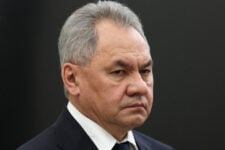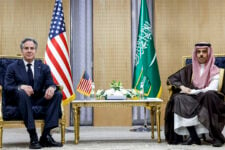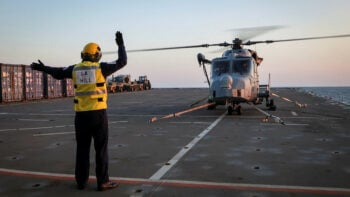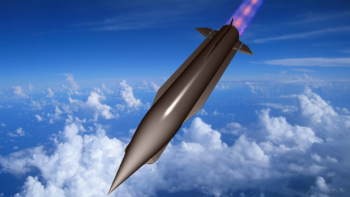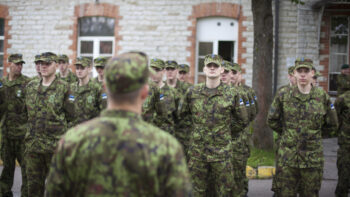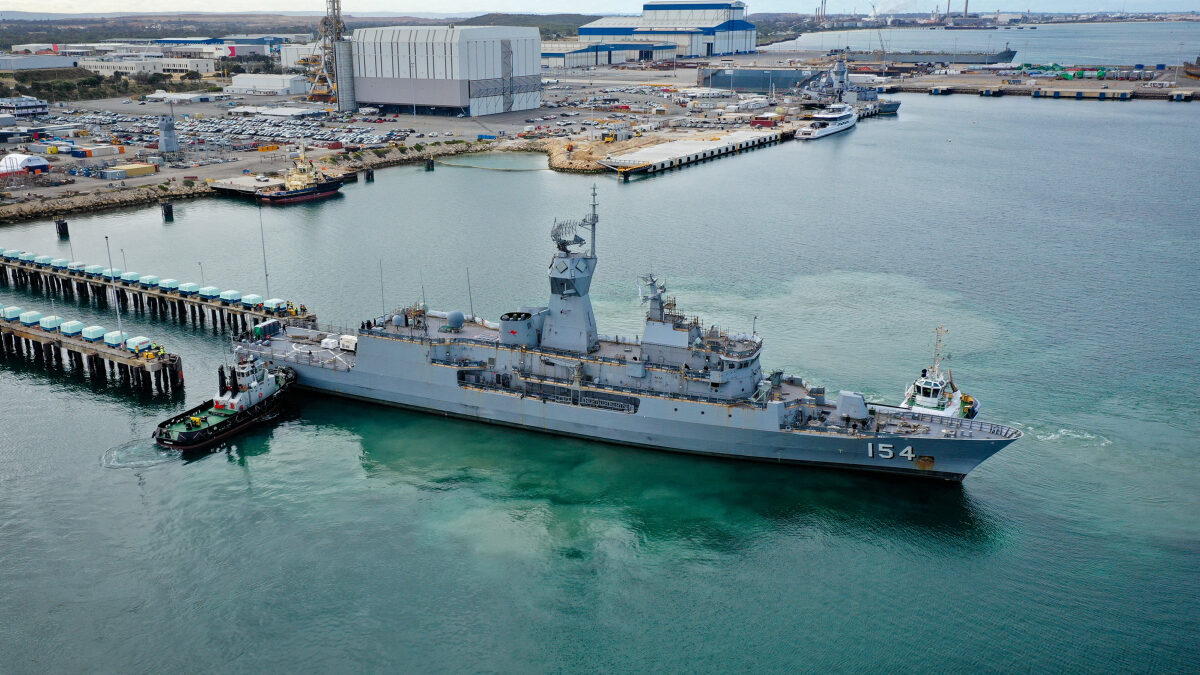
HMAS Parramatta arrives at Henderson Shipyard in Western Australia to begin her Anzac Midlife Capability Assurance Program (AMCAP) upgrades. (RAN)
CANBERRA — As Australia awaits a critical review of its naval posture, international shipbuilding firms are already lining up their pitches to help build any new warships Canberra might deem necessary for its future fleet.
So far, four companies have announced bids, all offering vessels in the corvette, light frigate class or frigate class, with capabilities comparable to the Royal Australian Navy’s (RAN’s) 1990s-built Anzac-class frigates.
The potential competition is the result of the Australian Defence Strategic Review (DSR) released in April, which said Australia’s surface fleet should comprise a mix of Tier 1 and Tier 2 vessels combatants “consistent with a strategy of a larger number of smaller surface vessels.”
Currently the Navy’s surface combatant fleet comprises the three Hobart-class Aegis guided missile destroyers (DDGs) and eight Anzacs, set for replacement by nine new Hunter-class frigates, configured for anti-submarine warfare, from around 2030.
The DSR didn’t define what it means by Tier 1 and Tier 2 combatants, though Tier 1 is understood to include the Navy’s three DDGs and maybe the eight Anzac frigates, suggesting the current set-up may fit the bill at least as far as the fleet’s balance.
But at the time of the DSR release, Australia’s Defence Minister Richard Marles noted two main takeaways:
First, the current RAN surface fleet was crafted when the Navy operated conventionally powered submarines. It’s now acquiring nuclear subs, vastly more capable in the anti-submarine warfare role.
The other is a trend in world navies towards operating a more, smaller vessels, rather than a few large, exquisitely capable but expensive vessels.
That means that for Australia, there is plenty of international interest and capability available for new ships in the global shipbuilding market.
But how to decide? The DSR recommended an independent analysis of the RAN surface warships fleet, now under way under the direction of retired US Navy Vice Admiral William Hilarides. His report is due in September.
From that review, the government will decide whether the existing surface combatant fleet is appropriate — or whether to acquire other warships.
The Contestants, So Far
German shipbuilder Luerssen was quick off the mark, proposing its C90 corvette, an Australianized version of the two Multipurpose Modular Patrol Vessels it’s building for Bulgaria.
On a recent tour of the firm’s operations in Germany and Bulgaria, company officials described that vessel as a 90-meter 2,300-tonne (2,535 ton) warship equipped with 16 vertical launch system cells for air defence, a 76mm main gun, 35mm secondary gun, capability for anti-ship missiles such as the Kongsberg NSM and a pair of triple torpedo tubes, hull-mounted sonar and provision for a towed array sonar. (Like other outlets, Breaking Defense accepted travel and accommodation from Luerssen for the trip.)
The company says the vessel could be equipped with an Australian CEA radar with Saab 9LV combat system. The firm contends that’s firepower comparable to an Anzac in a hull just over half the size, with a crew of 60, a third that of an Anzac. Range is 6,000 nautical miles, comparable to an Anzac frigate.
Luerssen is currently building 12 Arafura-class offshore patrol vessels (OPVs) for the RAN, replacements for the fleet of Armidale-class patrol boats. Luerssen said that should the Commonwealth desire, it could pivot from construction of OPVs to C90, making use of its existing workforce and supply chain and delivering the first vessel in 2028 and others every 10 months.
Meanwhile, Navantia Australia, a subsidiary of Navantia of Spain, is proposing an Australianized version of its Alfa 3000, a 3,000-tonne (3,307 ton) 104-meter vessel built wholly in Spain, in Australia or a hybrid of both.
The Navy’s current three Hobart-class DDGs, two Canberra-class LHDs and two Supply-class replenishment oilers are all Navantia products. The company says six corvettes could be delivered by 2029 if built in Spain or 2032 if built in Australia. Navantia is also proposing another three Hobart-class DDGs. The last of the Hobarts, HMAS Sydney, was launched in May 2018.
Back in Germany, TKMS (Thysenkrupp Marine Systems) is proposing the 2,000-tonne (2,205 ton) 90-meter K130 corvette for Australia. This is a mature and well-armed design, as 10 have been built for the German Navy and four variants for the Israeli Navy. TKMS was also one of three bidders to build diesel-electric subs for Australia, a contest won by Naval Group of France.
Another potential contestant, Babcock Australasia, a subsidiary of London-based Babcock International Group, is proposing the Type 31 Arrowhead, a frigate under construction for Britain’s Royal Navy, Indonesia and Poland.
At 138 meters and 5,700 tonnes (6,283 tons), this is larger even than an Anzac frigate, is equipped with 32 VLS cells and accommodation for a full-sized helicopter.
“Babcock’s innovative Arrowyard concept can support a sovereign build and is a comprehensive and bespoke program of technology transfer and focused support options,” said Babcock Australasia CEO Andrew Cridland.
Professor Peter Dean, director of foreign policy and defense at the US Study Centre at Sydney University and co-lead of the Defence Strategic Review secretariat who was on the Luerssen trip, told Breaking Defense there were different corvette options with different capabilities which would need to be assessed.
“The ultimate aim is doing things with less risk, less cost and really a big emphasis on speed,” he said.
But it’s not a done deal that Australia will be in the market for new ships at all.
Writing on the Australian Strategic Policy Institute The Strategist blog, retired Rear Admiral Rowan Moffitt said Australia needed large warships, not corvettes, for the same reason Canberra needed nuclear subs — the vast area of operations.
“The key matter for our combat ships is endurance in the operating environment they face. The main factor determining endurance is crew size and how the ships are supported on operations,” he wrote.
“Australia is surrounded on three sides by open ocean (the so-called blue water) and must operate there, as well as in the archipelago to the north (the so-called brown water). Blue-water navies can comfortably and effectively operate in brown-water areas as the RAN has always done, but brown-water ships — including corvettes — will fail quickly in blue-water operations,” he said.
The potential competing shipbuilders, as well as the public at large, should have a better sense of what’s on Canberra’s mind once the fleet analysis is completed next month. Until then, expect the international jockeying to continue.

